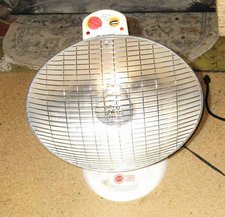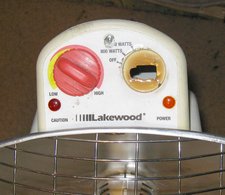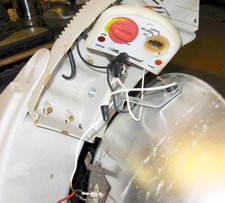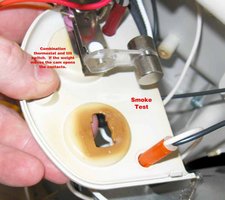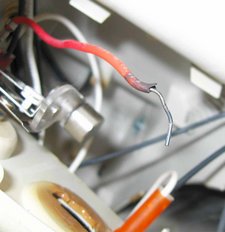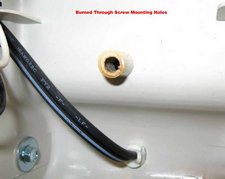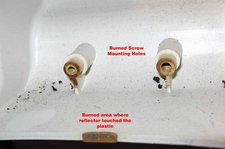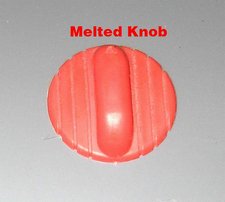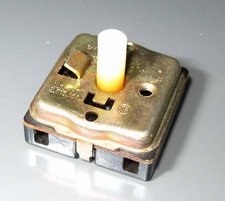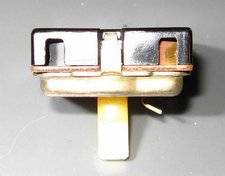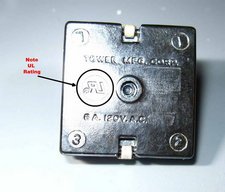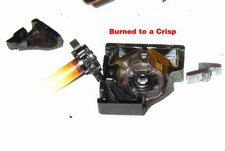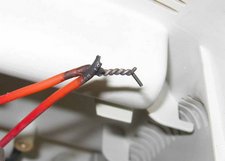If you’re a “Boomer” like me, you were probably raised up to respect that UL or “Underwriter’s Laboratory” label on electrical stuff. I still remember the ads on TV. The label really meant something too.
UL started out as an independent testing laboratory funded by the insurance companies to test boiler safety valves and related hardware to help reduce the industry’s losses from boiler explosions. That was a really Good thing. They evolved in to other areas and at some point were spun off as a separate business. That was a Fair thing. Then they decided that they needed to make more money so they became a stamping industry. That is, if you want a UL label, write a test that your hunk’o’junk will pass, pay UL a significant sack’o’money and Viola. You get to put the stamp on your product. That was a very Bad thing.
(great simplification, of course, and if someone from UL wants to write a short book on their history as a comment, I’ll let it stand.)
I’ve had UL-listed outlet strips not only melt but burst into flames. Examining the residue, I found brass foil or shim stock – too thin to call anything else – for contacts. Yet it had a 15 amp rating and that UL label.
Tonight I had the blue smoke leak out of a radiant heater that I use to keep my feet warm. Since I have a condition called Reynaud’s Syndrome which causes my feet and to a lesser extent my hands not to want to circulate enough blood to stay warm, this heater is almost a medical emergency supply. With 60 miles between the nearest Wallyworld and me, I decided to fix it. In the process I documented what all went wrong. This shows everything that is wrong with UL.
The heater
Here’s the critter in question. A quality “Made in China” Sun-Sational brand (as if it matters) radiant type heater that I picked up a few years ago from Wallyworld. This is about the closest thing you can get today that resembles the cone heaters of old with their polished copper reflectors that reflect infrared better than anything except gold. Notice the Zombie look up top.
Here’s a close-up of the Zombie. The thermostat is on the left. The power/high/low switch used to be on the right. As you can see, it’s been a bit warm
The inside view. the switch is hanging loose. You can also see charred wire, the two brown dots at the bottom of the inner space that are burned screw mounts and behind the black wire, a screw mount burned all the way through. The heating element was just two short burn-throughs from falling loose from the plastic and pointing at the floor. The tilt switch would NOT have caught that. Radiant heat on carpet or wood is not a good combination.
In this photo we see the back side of the front panel. The burned selector switch mount is kinda obvious. the tilt switch/thermostat at top is kinda clever. A bimetal strip moves to open the contacts when the temperature rises to the setpoint. The cam on the tilt weight does the same thing. Quite sensitive too. Only thing I can’t figure is why the weight is hung by clear (low melting point) plastic instead of say, metal.
Here is a wire that fell out of the selector switch. It was held in only by spring pressure. As the switch heated up, the spring pressure loosened, causing more resistance, more heat, looser spring, etc, etc. Not impressive
This is a close-up of one of the burned screw holes. Not quite visible here is how far the screw head had melted into the plastic. I had to dig it out before I could remove the screw.
This is the one where the screw head burned all the way through the plastic. I didn’t have to unscrew this one – it was already loose and released from the plastic.
Better angle of the other two burned screw holes and also the burned spot where the heater reflector touched the plastic.
The melted control knob. It actually looks a lot better than it is. It was welded to the white plastic of the heater housing when the heater finally quit.
Here’s the culprit, the Off/Hi/Lo switch. You can see that the nylon shaft has been charred, something that takes many hundreds of degrees to do. The wires stuck in the square holes where simple little springs grasp them
Edge shot of the switch showing how both sides are burned. The left side got hot enough that the phosphor bronze spring turned bluish black
The rear of the switch. Notice the nice little UL stamp. Wait til you see what’s inside!
11/24/08 update- as I looked at the above photo while proofing this entry, I noticed the “6 amp” rating right under the UL label. Hmmm. MY Kill-A-Watt says the heater draws 9.7 amp. Hmmmmm. Almost double overload. No wonder the blue smoke leaked out. Nonetheless, the whole heater has its own UL label. Hmmmmm.
Tragic looking, ain’t it? I didn’t break the case opening it. The Bakelite was so brittle from the heat that it jut fell apart in my hands. A burned contact is laying to the right of the switch body.
The Solution
This is my simple solution to the problem. Eliminate the switch. And the low heat function. After I twisted the wires together, I crimped on a nickel (high temperature) wire splicer and slid a piece of kevlar tubing over the joint, held in place by some teflon adhesive tape.
I’m now turning the heater on and off and regulating its output using an SCR type power tool speed control. All of $9 from Harbor Freight. There isn’t a UL sticker to be found anywhere on it but it’s built about 10X better than this “listed and certified” heater. Hmmm.
The Moral of the story is to use your Mk 1 standard issue Eyeballs when evaluating the safety or adequacy of a product. In this case, at the time it was the only radiant heater that I could find, I never operate it unattended (no feet to keep warm when I’m not there) and I knew that I could fix it when (not if) it broke. It’s a shame that UL has, IMO, become useless but it has. All that approval stamp means is that the manufacturer paid UL several tens of thousands of dollars minimum for the “privilege” of putting that emblem on their products.
I think I’ll start “NJL” or “Neon John Laboratories”. No pretense of testing or anything like that. Just show me da money and use my logo. Hmm, an idea is born….
